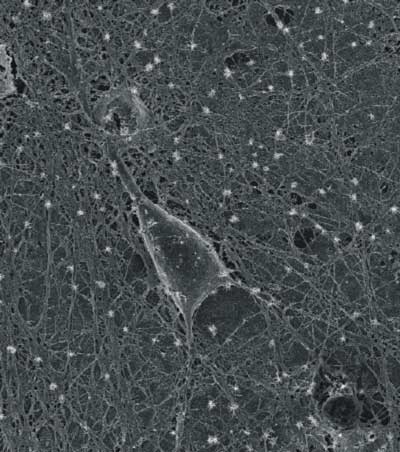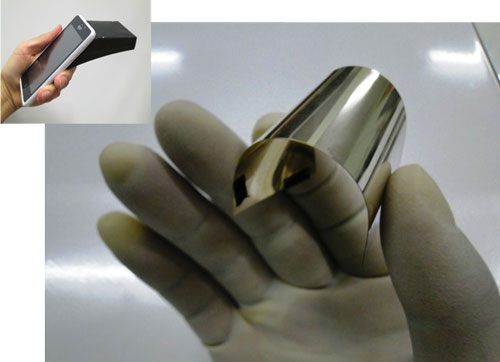Nanobiotechnology
Nanobiotechnology is a branch of biotechnology that involves the use of nanoscale materials and techniques to study biological systems and develop new medical technologies. It involves the integration of nanotechnology and biotechnology to create nanoscale devices, materials, and systems for the diagnosis, treatment, and prevention of diseases.
Nanobiotechnology takes advantage of the unique properties of nanoscale materials, such as high surface area, high reactivity, and small size, to create new tools for biological research and medical applications. Some examples of nanobiotechnology applications include nanoscale drug delivery systems, nanoscale imaging agents for cancer diagnosis, and nanoscale biosensors for disease detection.
While biotechnology deals with metabolic and other physiological processes of biological subjects including microorganisms, in combination with nanotechnology, nanobiotechnology can play a vital role in developing and implementing many useful tools in the study of life.
Although the integration of nanomaterials with biology has led to the development of diagnostic devices, contrast agents, analytical tools, therapy, and drug-delivery vehicles, bionanotechnology research is still in its infancy.
Our Nanowerk Spotlight section on bionanotechnology contains hundreds of research articles on this topic. Here is a brief overview:
Applications of nanobiotechnology in medicine
Nanotechnology in medicine is a wide area that encompasses disease diagnosis, target-specific drug delivery, and molecular imaging.
In particular thanks to nanoelectronics will the medical sector undergo deep changes by exploiting the traditional strengths of the semiconductor industry – miniaturization and integration. While conventional electronics have already found many applications in biomedicine – medical monitoring of vital signals, biophysical studies of excitable tissues, implantable electrodes for brain stimulation, pacemakers, and limb stimulation – the use of nanomaterials and nanoscale applications will bring a further push towards implanted electronics in the human body.
In previous Nanowerk Spotlights we have already covered numerous research advances in this area: The development of a nanobioelectronic system that triggers enzyme activity and, in a similar vein, the electrically triggered drug release from smart nanomembranes; an artificial retina for color vision; nanomaterial-based breathalyzers as diagnostic tools; nanogenerators to power self-sustained biosystems and implants; future bio-nanotechnology might even use computer chips inside living cells.
A lot of nanotechnology work is going on in the area of brain research. For instance the use of a carbon nanotube rope to electrically stimulate neural stem cells; nanotechnology to repair the brain and other advances in fabricating nanomaterial-neural interfaces for signal generation.

Sensors and diagnostics
Molecular sensing and molecular electronics is a diverse area that can include molecular conformational changes, changes in charge distribution, changes in optical absorbance and emission, or changes in electrical conductivity along or across simple or complex-shaped molecules, all in response to a target input. Each of these approaches can be integrated into a transduction system that provides a measurable and desired change in response to a specific or range of inputs. The ability to integrate such transduction mechanisms with biomolecules or to use biomolecules as the source of such materials provides, to varying extent, biocompatibility with other systems.
Plasmonic nanobiosensors, could ultimately become a key asset in personalized medicine by helping to diagnose diseases at an early stage.
In other work, nanobiosensor that were originally designed to detect herbicides can help diagnose multiple sclerosis and a new type of smartphone-based nanobiosensor has shown promise for early detection of tuberculosis.

Quantum dots and noble metal nanoclusters are very active and exciting areas in the field of bionanotechnology, with new progress constantly being made in adapting these technologies in the creation of new biosensors and bioelectronic devices.
Integrating DNA and other nucleic acids with nanoparticles
Functionally integrating DNA and other nucleic acids with nanoparticles in all their different physicochemical forms has produced a rich variety of composite nanomaterials which, in many cases, display unique or augmented properties due to the synergistic activity of both components. For instance, researchers have fabricated a DNA impedance biosensor for the early detection of cancer or the rapid detection of the flu virus.
These capabilities, in turn, are attracting greater attention from various research communities in search of new nanoscale tools for diverse applications that include (bio)sensing, labeling, targeted imaging, cellular delivery, diagnostics, therapeutics, theranostics, bioelectronics, and biocomputing to name just a few amongst many others.
The role of nanobiotechnology in the food sector
The development of nanotechnology in food and agriculture has led to nanobiotechnology applications in that include pesticide delivery systems through bioactive nanoencapsulation; biosensors to detect and quantify pathogens; organic compounds; other chemicals and food composition alteration; high-performance sensors (electronic tongue and nose); and edible thin films to preserve fruit.
